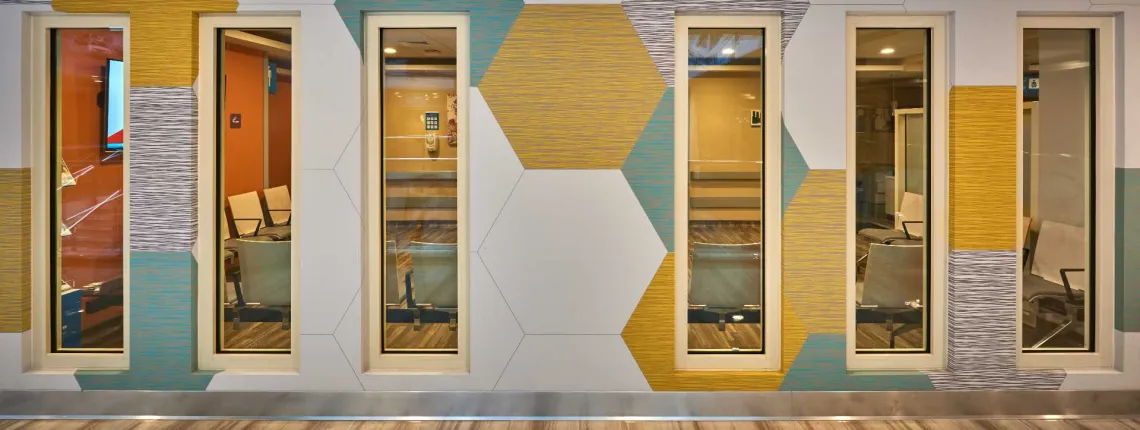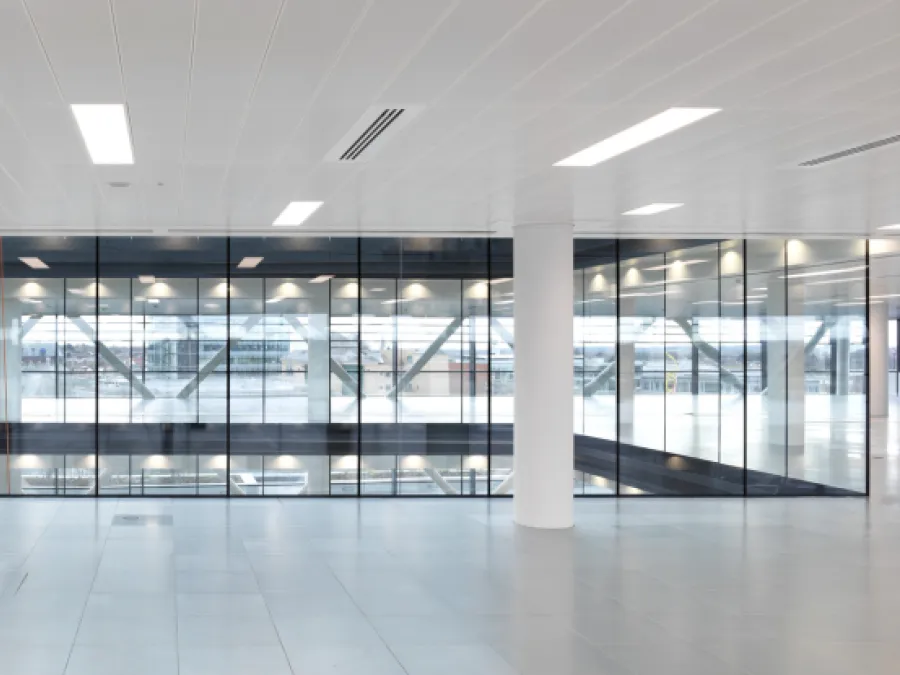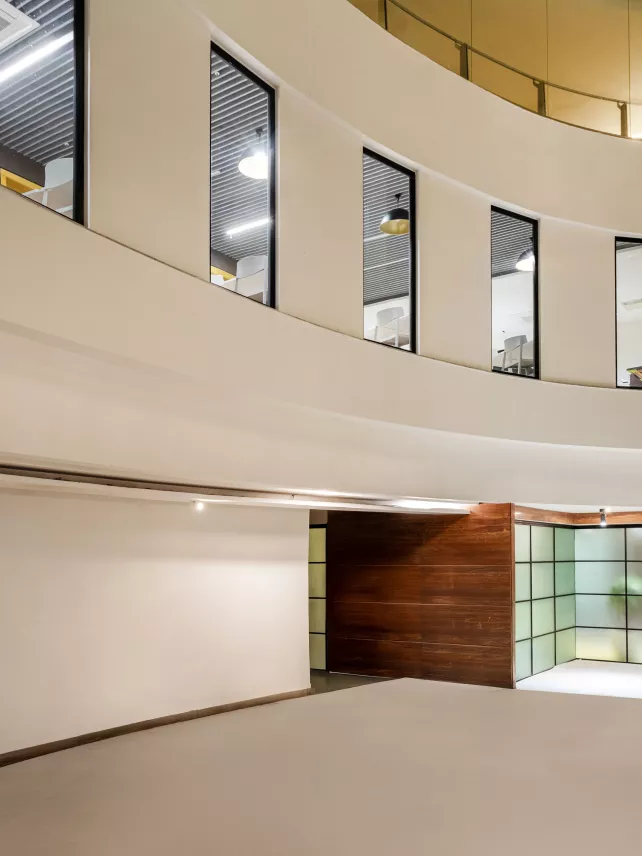The National Building Code and Specifying Fire-Rated Glass for the Indian Market

In India's rapidly evolving construction landscape, ensuring fire safety has become a paramount concern. The National Building Code fire safety regulations, particularly its 2016 edition, underscore the importance of passive fire protection and compartmentalisation in safeguarding lives and property.
Among the various measures, the integration of fire-rated glass stands out as a solution that marries safety with aesthetic appeal. Tested and certified fire-rated glass solutions are now an essential component in modern architecture, providing effective fire resistance without compromising design flexibility.
Breaking Down NBC 2016: What You Need to Know
Imagine a fire breaking out in one section of a building. Without proper containment, flames and smoke can spread rapidly, endangering lives and causing extensive damage. That’s why NBC fire safety norms in 2016 emphasised compartmentation, dividing a building into fire-resistant sections to keep the fire from spreading.
This principle applies to stairwells, lift lobbies, refuge areas, kitchens, and parking zones, ensuring occupants have enough time to evacuate safely.

Fire Zones and Building Categories: Where Does Your Space Fit In?
Not all buildings are created equal when it comes to fire risk. That’s why the National Building Code fire safety regulations categorise structures based on their function and potential hazards.
Each category comes with its own fire safety regulations, ensuring that buildings are designed with occupant safety as a priority. Choosing fire-rated glass that aligns with NBC fire safety norms ensures compliance while maintaining a sleek, modern look.
These fire zones help architects, builders, and fire safety professionals determine the right materials and protection measures for each space.
So, where does your building fit in? NBC classifies structures into the following categories:
- Residential – Homes, apartments, hotels and housing complexes where safety measures focus on evacuation routes, fire alarms, and compartmentalisation.
-
Educational – Schools, colleges, and universities require specialised fire exits, clear signage, and fire-resistant partitions.
-
Institutional – Hospitals, nursing homes, and care facilities need the highest level of fire protection due to the presence of vulnerable occupants.
-
Assembly – Theatres, auditoriums, stadiums, and banquet halls are designed to accommodate large crowds, necessitating clear exit routes and fireproof enclosures.
-
Business – Offices and corporate buildings need safe stairwells, fire-rated doors, and well-placed fire extinguishers.
-
Mercantile – Malls, shopping centres, and markets must prevent fire spread between shops while allowing easy evacuation.
-
Industrial – Factories, warehouses, and manufacturing plants have strict fire containment requirements due to high-risk machinery and flammable materials.
-
Storage – Warehouses and cold storage facilities require specialised fire-rated partitions to protect stored goods.
-
Hazardous – Chemical plants, oil refineries, and other high-risk establishments need the most advanced fire-resistant materials and containment strategies.
Understanding Fire-Rated Glass: How Safe is Safe Enough?
Not all glass is built to withstand fire. Standard glass shatters when exposed to high temperatures, allowing fire and smoke to spread rapidly. Fire-rated glass, on the other hand, acts as a protective barrier. But how do you know which type is best for your building?
NBC sets clear performance standards based on three classifications:
-
E-Class (Integrity Only) – The First Line of Defense
This type of fire-rated glass prevents the spread of flames and smoke but does not block heat transfer. It’s ideal for applications where containing fire is crucial, but radiant heat protection isn’t a major concern.
-
EW-Class (Integrity + Radiation Control) – Extra Protection
EW-Class glass takes it a step further by reducing the amount of heat transferred through the glass. This means that while it prevents flames and smoke from spreading, it also minimises the impact of radiant heat, making it safer for evacuation routes.
-
EI-Class (Integrity + Insulation) – Maximum Safety
This is the gold standard of fire-rated glass. Not only does it stop flames and smoke, but it also blocks radiant heat. This is ideal for high-risk areas where occupant safety is a priority.
When selecting fire-rated glass, it’s essential to choose the right classification based on the building’s function and fire safety needs.
Where Should You Use Fire-Rated Glass? NBC’s Compliance Checklist
NBC has mapped out specific areas that require fire-rated glass to ensure maximum safety while maintaining architectural integrity.
By strategically integrating fire-rated glass in these key areas, buildings can meet NBC compliance while enhancing safety without sacrificing aesthetics.
Here’s where it should be used:
-
Internal & External Fire Exit Stairways – These are critical evacuation routes. Fire-rated doors and partitions help contain the fire and provide a safe exit path.
-
Firefighting Shafts – Essential for emergency responders, these areas must be enclosed with fire-resistant materials to keep them operational during a fire.
-
Non-Naturally Ventilated Lift Lobbies – Since smoke buildup in lift areas can be dangerous, fire-rated glass barriers help create a smoke-free zone.
-
Refuge Areas – Designated safe zones in high-rise buildings need fire-rated partitions to provide temporary protection while evacuation is underway.
-
Car Parking Separations – Parking garages carry a fire risk due to fuel exposure and vehicle congestion. Fire-resistant walls help contain potential fires, preventing them from spreading and enhancing overall safety.
-
Kitchen Separations – Commercial and residential kitchens require heat-resistant barriers to prevent fire from spreading to other areas.
What to Check Before Specifying Fire-Rated Glass?
Before choosing fire-rated glass for your project, consider these factors:
-
NBC Part 4 Certification – Ensure the glass meets NBC Part 4 fire safety standards, which outline essential fire protection measures.
-
BIS Standards Compliance – Fire-rated glass should be tested under IS 16947:2018 and IS 16945:2018, India’s benchmark standards for fire resistance and safety.
-
Local Fire Department Approvals – Each state or city has its own fire safety regulations. Ensure that your fire-rated glass is pre-approved for municipal construction projects.
-
Third-Party Certifications – Look for additional certifications, such as IGBC, GRIHA, or LEED, which indicate compliance with sustainable and safety standards.

Choosing the Right Fire-Rated Glass: Indian Considerations
India’s climate and architectural trends add unique considerations when selecting fire-rated glass. Here’s what to keep in mind:
-
Climate Considerations - Vetrotech's glass solutions are engineered to withstand India's diverse climatic conditions, from high humidity to extreme temperatures, ensuring durability and performance.
-
Architectural Trends - Modern architectural designs often feature expansive facades and atriums. Vetrotech's fire-rated glass seamlessly integrates into these designs, offering both safety and aesthetic appeal.
-
Maintenance & Durability - Prioritising ease of maintenance, UV stability, and longevity, Vetrotech's solutions are tailored to the unique challenges of Indian urban environments.
Choosing the Right Fire-Rated Glass
Fire safety goes beyond compliance; it’s about building secure, resilient spaces. NBC 2016 sets the benchmark, and fire-rated glass ensures safety without compromising aesthetics.
At Vetrotech, we deliver certified fire-rated glass that meets NBC and BIS standards, combining protection with modern design. Our solutions offer durability, efficiency, and peace of mind for any project.
Build smarter and safer with Vetrotech, where innovation meets protection.
How do I ensure my fire-rated glass is NBC-compliant?
Check for certifications under NBC Part 4 and BIS standards. Additionally, verify approvals from your local fire department.
What’s the difference between E, EW, and EI-class glass?
-
E-Class - Stops flames and smoke but does not block heat.
-
EW-Class - Stops flame smoke and reduces radiant heat.
-
EI-Class - Stops flames, smoke, and blocks heat completely, keeping the protected side cool.
Can fire-rated glass be used for both interiors and exteriors?
Yes! It is commonly used for internal partitions, stairwells, and building facades as long as it meets the required fire safety standards.
Does India’s climate affect fire-rated glass performance?
Yes, but high-quality fire-rated glass is designed to handle extreme heat, humidity, and UV exposure while maintaining durability.
